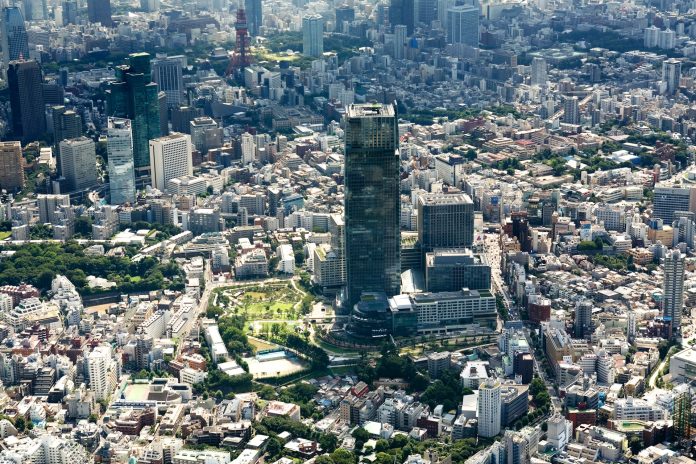As cities grow and population density increases, city planners have a big problem: how to make the most of small spaces. While big parks and vast recreational areas are ideal, they’re not always possible in dense urban environments.
But with a touch of creativity and intuitive design know-how, even the tiniest spaces can be turned into a bustling community hub. And with that said, here are six ways city planners can make the most of limited space.
1. Modular Play Areas
Modular play areas are perfect for urban areas. These play areas are designed to be flexible, with equipment that can be easily moved or interchanged to suit different age groups or community use cases.
A key part of these modern play areas is the inclusion of swing sets, which are a playground classic. Swings used to require a big, fixed footprint. But now, newer swing set designs are more compact and can be fitted into modular play areas without sacrificing space. City planners looking to include swing sets in limited spaces can check out modern, space-saving options at Playground Equipment, which have a range of styles to suit different layouts and space constraints.
2. Pop-Up Parks and Pocket Parks
Pop-up parks and pocket parks are great ways to reclaim underutilized urban spaces. These small, temporary, or permanent green areas are often created in vacant lots, alleyways, or leftover land near intersections. Small in size but big in impact, these parks provide seating, greenery, and recreational space for the community.
City planners can work with local artists and landscape designers to create a welcoming and playful feel in these small areas. There are ample ways to turn a plain strip of concrete into a socially engaging stretch of any city. Attractions like water features or interactive art all come together to give even cramped city spaces more dynamism and personality.
3. Rooftop Recreation Areas
In densely populated cities, there’s one often overlooked area with huge potential: rooftops. Apartment buildings, office buildings, and public structures can all be turned into rooftop recreation areas.
It can be hard, at first, to envision a rooftop as being a safe space for recreation, but there are ways to do it in a way that optimizes space without creating hazards. Rooftop play areas are a solution to space constraints at ground level.
Some of these designs even include multi-use sports courts and playgrounds with swings, climbing walls, and other traditional playground equipment. Rooftop gardens with play zones for children can add some greenery to the concrete jungle and provide much-needed access to nature in high-density areas.
4. Multi-Purpose Public Spaces
In some cases, certain areas of a city can be (and ought to be) reserved for multiple different applications. Consider the different areas of your city’s layout and consider what types of events happen, where, and how often. Going through this exercise will likely reveal certain spots that are only used for a few hours each week. These are ripe opportunities for multi-use spaces that are borrowed for different reasons.
For example, an open plaza can be a farmers market on weekends, a public space for events and performances in the evenings, or an outdoor play area for children during the day. Seating can be modular,r so it can be moved or removed as needed. Digital signage and smart technology can tell the public what the space is being used for and encourage participation and community engagement.
5. Vertical Landscaping and Green Walls
We’ve mentioned greenery a couple of times now, and for good reason. Greenery is hugely helpful for mental well-being. Unfortunately, in dense city environments, green spaces are often few and far between. However, a solution to introducing more greenery into any city is by literally adding green coloration to vertical surfaces. Green walls can be installed on the sides of buildings, in alleyways, or on standalone structures in public plazas.
Vertical gardens not only beautify urban areas but also improve air quality, reduce the urban heat island effect, and promote biodiversity. Some designs have small planters where community members can get involved in gardening; others have native plants that require minimal maintenance. On top of environmental benefits, green walls are an opportunity to add a splash of life to an otherwise pedestrian-looking wall surface.
6. Mobile Play Units
When permanent structures aren’t possible, mobile play units are a solution. Somewhat similar to pop-up parks, these are transportable play areas that can be moved from one location to another. They’re great in that they give city planners flexibility in how they allocate recreational resources. Pop-up play zones can be set up in parking lots, vacant lots, or temporary event spaces, making them perfect for seasonal festivals or community events.
Mobile play units are often designed with collapsible or foldable components so they can be quickly assembled and disassembled. This flexibility means you can bring play to the community where a permanent play space isn’t possible. Mobile units often include climbing structures or slides, so they are a great option for city planners looking to maximize impact with minimum investment.
Now Go, and Optimize Your Cityscape
Making the most of small spaces in urban areas requires thinking outside the box, flexibility, and a willingness to challenge the status quo. From modular playgrounds to rooftop gardens, the options are almost endless. All it takes is a vision of what can be for your city.
If you focus on promoting multi-functionality and community engagement, you’ll have what it takes to turn even the smallest of spaces into public spaces that are alive and welcoming. These solutions not only improve the urban environment but also deliver long-term value to communities looking for recreation, relaxation, and connection in the heart of the city.



 Bitcoin
Bitcoin  Ethereum
Ethereum  Tether
Tether  XRP
XRP  Solana
Solana  USDC
USDC  Cardano
Cardano  TRON
TRON  Lido Staked Ether
Lido Staked Ether  Avalanche
Avalanche  Toncoin
Toncoin